Although QR codes have actually been around since the ‘90s, it wasn’t until 2020 that this piece of technology got a serious boost. When the global pandemic caused a shutdown, QR codes became an easy, safe, contactless way for businesses, including breweries, brewpubs, and bars, to continue to operate.
According to an eMarketer report from Insider Intelligence, during the height of the pandemic (2020) smartphone users who scanned a QR code at least once during the calendar year surged to 65.7 million people. And while the rush to implement this technology has certainly slowed, businesses are continuing to turn to QR codes as a viable part of their business model.
All told, this technology has been shown to increase check averages, create a better customer experience, and drive businesses’ overall bottom line, making it an important part of any brewery moving forward.
(Photography courtesy of GoTab)
What We’ll Cover in This Piece:
The Current State of QR Codes in 2023
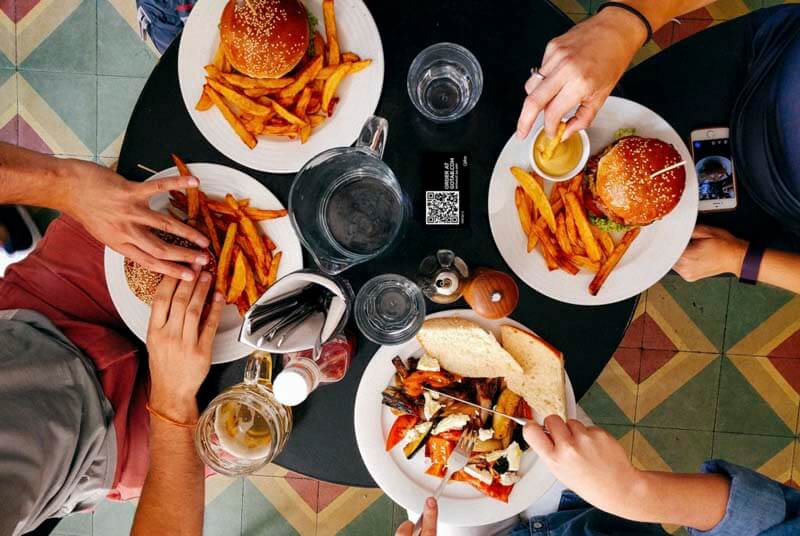
Photography courtesy of GoTab
Without a doubt, the way breweries and brewpubs operate has changed dramatically from several years ago during the height of the pandemic.
“One hundred percent, things have changed without question as an operator… Even technology from the start of [the] pandemic to current has progressed at a rapid pace on all fronts,” says Gregg Frazer, V.P. of hospitality at Stone Brewing, who started implementing QR codes at the brewery’s bistro and taprooms right before the global pandemic.
Frazer points to how he’s adopted different types of service models at Stone to reflect changes in the industry. During the height of the pandemic he used what he called a “labor light model.” One heavy on QR codes without much human interaction. Now, Frazer implements a hybrid model that incorporates servers and table touches with an emphasis on ordering and completing payment through QR codes.
He sees this model as the future of the industry.
“With breweries it’s a perfect place and marriage where you can figure out a hybrid service,” says Frazer. “I believe there’s a world where that becomes the preferred style of dining versus strictly the only way to have the capability to order is through a server.”
Frazer’s model reflects what’s happening in the beer and restaurant industry across the globe, specifically with QR codes. Even as people and establishments return to a “new normal,” QR codes have continued to perform well. The National Restaurant Association reported that in 2022, two years after lockdowns, fifty-eight percent of adults surveyed are more likely to access a menu through a QR code or on their phone.
In TouchBistro’s report on “The State of Restaurants in 2022,” seven out of ten restaurants had introduced some form of contactless mobile payment or QR code system.
All signs point to QR codes continuing to experience healthy growth and help drive a number of industries, including beer.
“Breweries are in that right spot to capitalize on using technology and layering in elements of service to provide for a memorable, exceptional experience,” says Frazer.
It’s a dramatic turnaround from just several years ago when America seriously lagged behind other countries that had already adopted QR codes such as China and Australia.
“I think the U.S. has a long legacy, but we’re behind on this, quite frankly, compared to other places internationally,” says Frazer. But today, the United States has led a QR code renaissance, recording the highest level of scanning activity in the first quarter of 2022—over 2.8 million QR scans—based on QRTIGER’s database.
And across the entire world, the predicted global spend from QR codes over the next three years is expected to increase by twenty-five percent, reaching over $3 trillion by 2025, as reported in a study from Juniper Research.
Accordingly, QR code operators have continued to refine and retool their technology, providing businesses with more streamlined, all-in-one options.
For instance, GoTab, which started as a contactless ordering payment web service, launched its own all-in-one restaurant point-of-sale system last year.
GoTab CEO Tim McLaughlin shared that their business grew a hundredfold in those two years from 2020 to 2022.
Although the surge of QR code adoption isn’t happening at the same pace as the beginning of the pandemic, this form of contactless payment is still a very important tool for brewery and bar operators to implement for several reasons.
The 9 Advantages of Using QR Codes in 2023
1. Increases Check Averages / Helps With the Upsell

Photography courtesy of Stone Brewing
First and foremost, QR codes can help increase check averages, complete the upsell, and ultimately turn a larger profit.
“The biggest [advantage] is more sales,” says McLaughlin. “We generally see thirty percent more beverage sales when you allow an order on QR codes.”
Instead of a guest getting up from their table and standing in line again to get a beer, they can simply order from their phone with a couple taps.
“Turns out a lot of people don’t like lines and will order more beer…because they never have to stand up,” says McLaughlin, who points out that with QR codes it’s as easy as “here’s the beer you want, push a button, and the beer magically comes to you.”
An easy way of ordering means guests are more likely to grab that second or third drink, increasing your check average.
Additionally, the upsell capabilities are unparalleled. With most contactless ordering systems the technology will automatically offer guests certain items to pair with their order such as a specific beer or side.
“You don’t have to trust in your server every time to do the upsell,” says Frazer. “The computer system has a way to do it that’s tasteful and tactful.”
Accordingly, GoTab reports that operators using its QR code contactless ordering see thirty-five to fifty percent higher check averages.
At Stone, Frazer says since using QR codes Stone’s sales numbers have increased from 2019 to 2022.
According to Frazer, all of Stone’s bistros and taprooms ended 2022 “pretty significantly beating 2019 numbers.”
And with most businesses today setting the bar for success at getting back to pre-pandemic (2019) levels, it seems like Stone has tapped into the right equation.
“The numbers don’t lie,” says Frazer. “We are a mature business—one of our bistros is over eighteen years and one is over ten years—so to pivot the entire operating model and continue to have growth in sales…QR technology is a testament to what is possible.”
2. Reduces Labor Cost
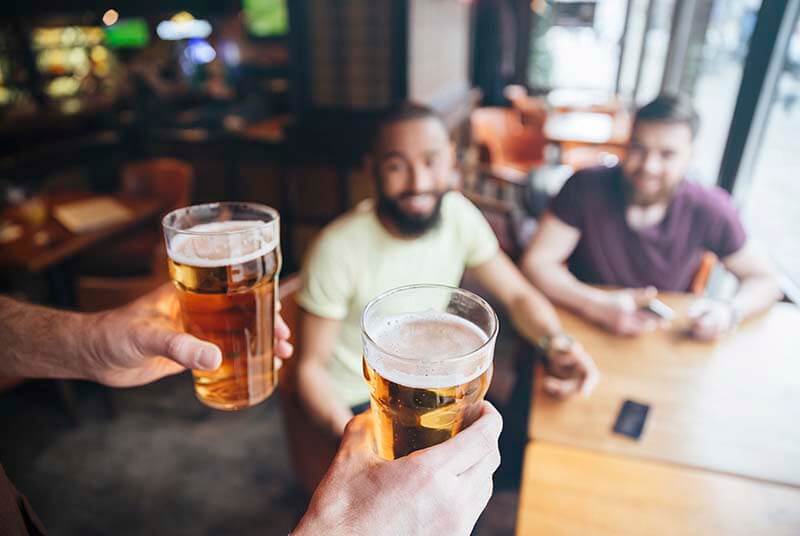
Photography courtesy of GoTab
Implementing QR codes helps reduce the cost of labor, one of the biggest expenses in any brewery or restaurant.
“Your labor costs go down because it turns out you don’t need someone to take the orders…..and type it into a POS,” says McLaughlin.
According to GoTab, operators using their contactless ordering and payment system see a twenty- to thirty-percent reduction in labor costs.
No small matter when you consider that the operational costs of a brewery are rising across the board.
Food, ingredients, and labor costs have all increased over the last year. “All the inputs for producing beer are rising whether that’s labor, hops, water, yeast, it’s all going up,” says Frazer.
One way to combat rising labor and supply costs is through charging the consumer more. But Stone chose not to increase prices in 2022.
Instead they pivoted with a new labor model. Frazer employs a hybrid service model that includes both server and QR code touch points.
Currently, a server will take a customer’s initial order and get their tab started. But once those first items are in, guests scan a QR code to access their tab and continue adding items themselves, take care of the check, leave a tip, etc.
That server will always be around to provide help should the customer choose, but the customer can also opt to go completely contactless from that point out.
This model frees up a server to help out in other aspects of the brewery or even take on more tables.
“QR is the answer,” says Frazer. “Where traditionally a server might be able to take a seven-table section, what if now a server can take a twelve-table section?”
Using QR codes in the right way means your staff has more time to actually interact with the customer and touch more tables, while logistically you can provide more service to more customers more efficiently.
3. Frees Up Your Staff to Concentrate on the Guest Experience
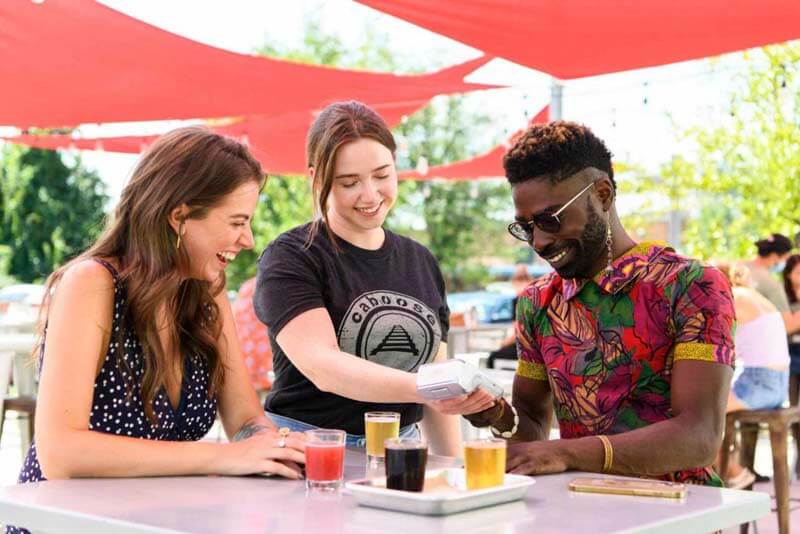
Photography courtesy of GoTab
In that same vein, if your servers are less concerned with taking orders and running food, they can truly concentrate on creating a better dining experience.
“If you take the order entry out, how can you layer in more than that?” says Frazer.
Things like extra table touches become possible. “In a normal restaurant you see five table touches, so can I do seven now that I have more time freed up from order entry?” says Frazer.
In a brewery specifically, additional layers can include giving out samples of beer and talking about the beers more, for example.
With QR code ordering, the guest experience with a server becomes less about simply ordering food and more about starting a conversation and interaction around the things that are most important to your business—like beer.
4. Reduces Food Waste
A sort of hidden benefit of QR code ordering is reducing food waste.
Think about it this way: When you order through a server—one of a few hurdles—things can happen. Either the server misspeaks, the customer mishears, or the server misenters the information into the systems.
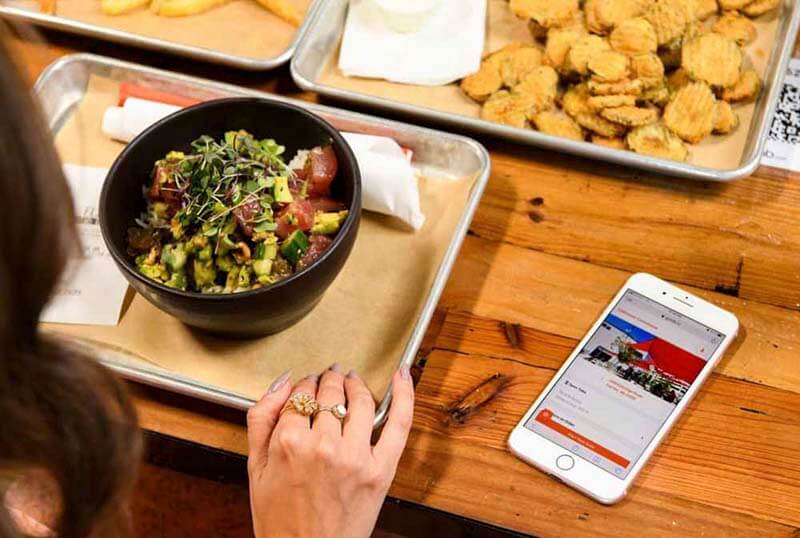
Photography courtesy of GoTab
“When that all happens, you end up with a cheeseburger when you thought you ordered a hamburger,” says McLaughlin. “As to who made the mistake, it doesn’t matter; the restaurant always eats the cost.”
With QR code ordering on a phone, the server can no longer be blamed for that mistake, meaning a customer is less likely to send back food and your establishment is less likely to have to eat that additional cost.
According to McLaughlin, their GoTab operators have seen a three- to five-percent reduction in food and beverage waste. Customer sendbacks also decreased from three to zero percent. “You take that three percent of food waste and you just wipe it out,” says McLaughlin. “You don’t have that waste, the cost, and you don’t have dissatisfied customers… You avoid all those problems.”
Reducing food waste may seem like a small advantage, but it can have a huge impact from cost to customer satisfaction.
5. Calculates the Exact Volume of Beer Sold

Photography courtesy of GoTab
A feature exclusive to GoTab, but particularly compelling especially for breweries, is calculating the exact volume of beer sold.
Why is this important?
Because as a brewery owner, you are required to pay excise taxes to your respective state on the amount of beer sold.
Oftentimes, however, breweries have no way of generating a report based on this number.
The short story, says McLaughlin, is that breweries actually end up paying twenty to thirty percent more in excise taxes because they calculate how much beer they made as opposed to how much beer they sold.
“Most breweries pay taxes…for the beer they make, but the reality is about twenty to thirty percent of that beer never gets sold,” says McLaughlin. “It gets dumped on the floor, tasted by employees, foams over on the taps, and has a tendency to disappear in a number of ways.”
McLaughlin says GoTab calculates that number, depending on the size of the brewery, to come out to $5,000 to $10,000 more a year. “You’re paying taxes you shouldn’t be paying,” he says. “You’re not only wasting beer, but you’re paying taxes on beer you didn’t sell, that the government never asked you to pay.”
Keeping that potential loss in your pocket can be crucial in a business that lives and dies by pretty thin margins.
6. Publishes All Your Menus Across Multiple Platforms

Photography courtesy of Untappd for Business
Taking the place of printed menus, QR codes offer a safe, streamlined experience for your guests. Operationally, leveraging QR codes makes all of your menus easier to update on the fly, allows you to display your brand messaging, and reduces printing and labor costs to maintain those menus.
Depending on the software you use, your QR codes are generally housed on a single online platform. Have you decided that your three locations want to put a seasonal beer on the menu? With QR codes, you can go into one backend system to make that change across all your menus. Run out of Sierra Nevada Pale Ale? It’s easy and quick to pull items.
For instance, with Untappd for Business, all it takes is a few clicks to create QR code menus for all of your menu items: beer, food, wine, cocktails. QR codes can be downloaded for digital use or embedded on easily customized printable menus, posters, and marketing materials. All within one simple interface.
7. Generates Mountains of Data
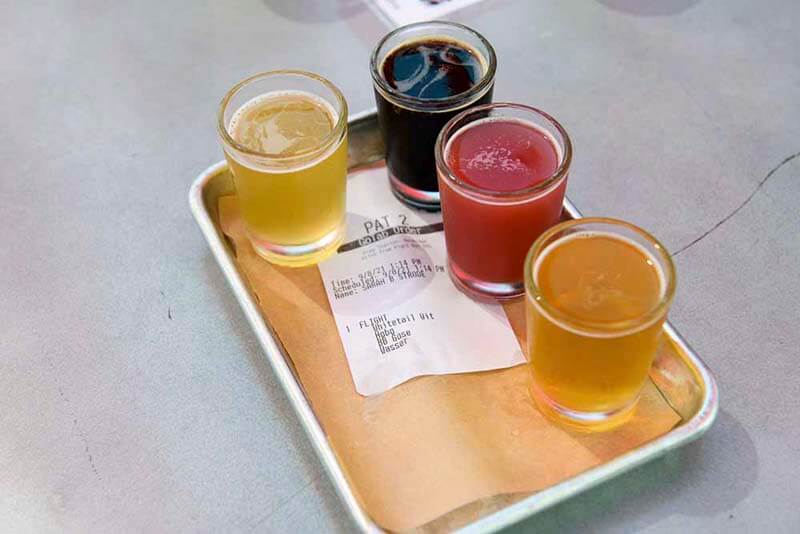
Photography courtesy of GoTab
On the backend, using a QR code means that you are most likely collecting a significant amount of information from your customers.
“A customer that orders at a POS is anonymous,” says McLaughlin. “A customer who orders on their phone is not anonymous.”
All of that consumer-ordering data can be analyzed and used to make strategic business decisions.
“We can be much more sophisticated about our marketing rather than just spamming all your customers,” says McLaughlin. “There is a misconception that consumers hate giving up their identity. What consumers hate is bad marketing. If you give them good marketing, consumers are totally fine with it… In fact, [customers] prefer you to know who they are, that’s the whole point of loyalty. They want you to say, ‘Hey, welcome back, glad to see you, liked that lager you had last time?’”
With GoTab, Frazer says they can see everything from the guest who spends the most money with them to who is ordering the most hazy IPAs and what dishes they get along with that.
Those are all opportunities. “That is the most powerful data you can have as an operator to make informed decisions about where to drive business,” says Frazer.
For instance, at Stone, Frazer says they have a series of limited-production beers they sell directly to the consumer called One Batch Dispatch (OBD). When the OBD beers are available, they pour them at the bistro as well. “Since we have data on who ordered specific items with GoTab, we are able to market the OBD direct-to-consumer program to our guests who have already ordered the OBD beers in our bistros,” explains Frazer.
Stone can use the data collected from QR code ordering to potentially help drive sales with another product with folks they’ve identified as key, targeted customers.
As you can imagine, the iterations here expand rapidly, opening up almost limitless opportunities to create additional sales.
8. Improves the Overall Guest Experience

Photography courtesy of GoTab
From a consumer perspective, QR codes streamline ordering and paying.
Where traditionally your guest would need to ask a server to put in an order for more food or drinks, they can handle all of that straight from their phone.
Where traditionally your guest would need to ask a server for a check at the end of the meal, with QR codes a guest can simply pay right from their phone and walk out the door.
“They don’t have to wait for a traditional check presentation, which is a little antiquated at this point,” says Frazer. “At the end of the meal [guests] can walk away whenever they want and pay their bill.”
Similarly, if you’re dining with a large group of friends or family, QR code ordering makes it easier to split checks. Frazer says this is especially true at Stone, where they get a lot of large parties with a significant amount of people coming. Each looking for their own check or to split the cost together. “QR code ordering makes it easier for them to do that on their phone versus having a server split things up and doing a bunch of different bills,” he says.
With these tools, QR codes make the entire process at the end of the meal easier, ultimately leading to a better experience for your guests.
And a better time at your brewery means someone will be more likely to come back, spread the word to other people, or post about how much fun they had at your spot on social media.
9. Provides Immediate Consumer Feedback
If a consumer does not have a positive experience at your establishment, however, the feedback component with many QR code ordering systems can be instrumental in changing that customer’s experience. Oftentimes before they even leave the taproom.
For instance, GoTab allows consumers to give feedback as soon as they close their tab and pay.
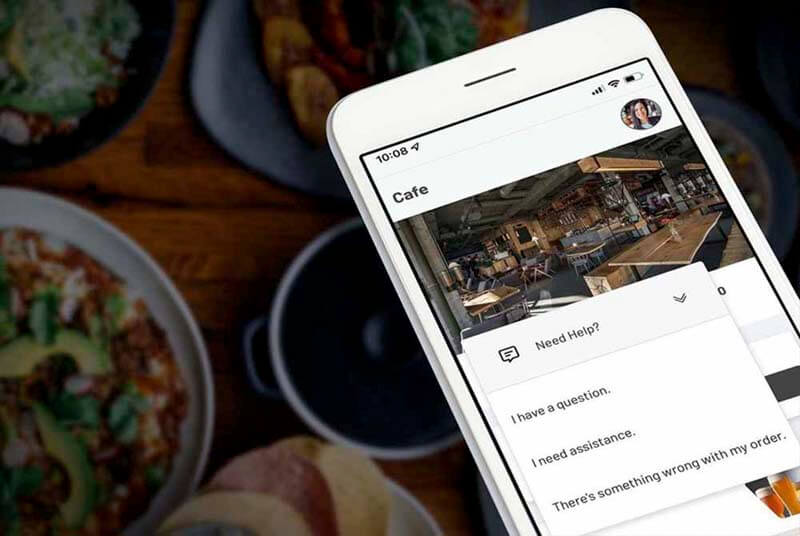
Photography courtesy of GoTab
Seeing that feedback in real time helps operators like Frazer make game-time decisions to try and change that overall experience for their guests.
“We can capture the guest before they leave to try and remedy,” says Frazer. “Prior [to QR codes], we had to wait for them to go on Yelp, OpenTable, or Tripadvisor and tell us how bad a job we did and then we’d try to invite them again and recover them, which is challenging.”
Addressing the situation in real time is a real benefit of QR codes. Even if you miss a guest before they walk out the door, it’s still easier to contact them afterwards to send a refund or apology because you already have their contact information stored.
“We always want everyone to have a great experience, but you will have bad days and things will go wrong,” says Frazer. “How you retain those guests and get them back in, to me, is a pretty critical part of building a business. Utilizing new technology like anything…it’s up to you how you use it, but use it for that and it speaks to the success of the business.”
The First Step to Using QR Codes
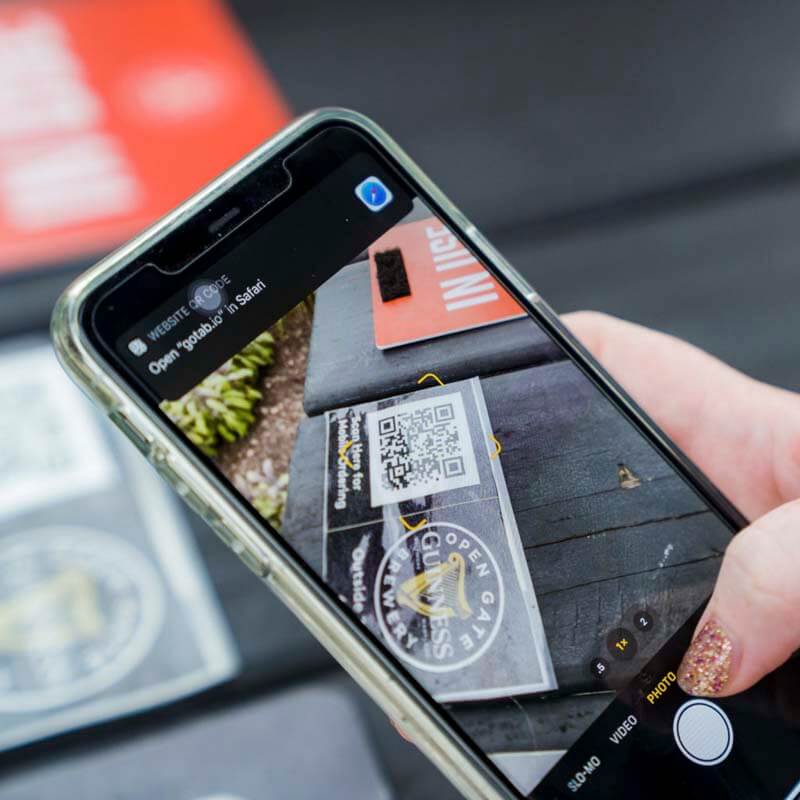
Photography courtesy of GoTab
If you’re not already using QR codes and looking to start, Frazer has a couple pieces of advice.
The first is to do your homework. “My biggest thing is to reach out to people, operators perhaps with a higher-volume footprint than you, and get real feedback,” he says. “Go to places using it and see what the experience is like. Find leaders who are using and doing it well and experience it firsthand…or do it better.”
Technology shouldn’t be shunned just because you don’t understand it. QR codes are a real weapon in a brewery’s arsenal to be considered and implemented if businesses hope to continue turning a profit and creating a better customer experience in the future.
“I am [a] million percent certain we’re at ground level and it’s moving,” says Frazer. “We know it’s coming, so why not jump on the train now? It’s going to happen, it’s inevitable, it’s getting better. The better and faster you can train and pivot your business to utilize this, that’s the intelligent operator of today.”
Ready to Grow Your Brewery Operations? Get Ollie.
Ollie’s software was created by brewers for brewers. The all-in-one brewery software manages your process, from raw materials to finished goods. Request a free demo today.



